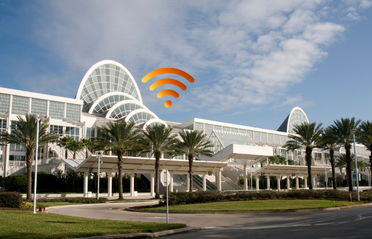IT infrastructure has become a significant backbone for the digital transformation framework in the industry today. Irrespective of the nature of the business, be it Financial Services, Software, Hospitality, Shipping, Logistics, etc. the only way to gain a strategic edge over the competition is through transformation and optimization. Automation and Innovation in IT infrastructure are the keys to achieve success and competitive advantage.
To achieve higher efficiency in business, organizations automate their IT networks to deploy existing or new innovative applications. All new deployments and incorporation of the latest networking technologies inadvertently contribute towards growing network complexity.
To achieve a competitive advantage over peers and achieve higher operational efficiency, organizations need to bring in the following capabilities in the network to resolve the above challenges:
- Simplicity through automation
- Scalability through innovative architecture
- Improved services through faster speed
- Fault reduction/monitoring through analytics
- Enhanced safety through security
One of the significant difficulties within organizations today is to maintain a stable network that successfully operates with new deployments. Some of the other impacting challenges also surface post-deployment during ongoing network operations. It is known that up to 95% of network changes are performed manually: which translates to 2-3x higher operational costs as compared to the cost of the network.
Key Capabilities required in IT Infra Transformation
To achieve and deliver these capabilities, organizations need to have expertise in innovative network technologies such as Core Infrastructure, Data Centre, Campus Deployment, Security, Critical Systems, etc. Hands-on experience on network and storage devices (CISCO, Dell, IBM, UCS, Nokia Airframe, Ekahau, Aerohive, Juniper, Palo Alto, SolarWinds, etc.) is also critical.
Building a team that is skilled in hybrid large scale network designs and deployments with the latest technologies (IoT optimized, SD-WAN/Enterprise, Cloud Networking, etc.) can help companies gain a competitive advantage over their peers in the network infrastructure and engineering services space.
Here are some FAQs that organizations may have in mind while devising a transformation strategy for their businesses:
Question: What is the best possible approach to improve the IT network, especially the wireless network, to provide the best internet service possible?
A customized approach is recommended for different companies as the requirements vary depending on various metrics such as the scale of the business, network design, set -up, and network traffic.
Initially, a study is usually performed to evaluate compatibility and optimum utilization based on network design. Pre audits are carried out along with Wireless Surveys (active as well as passive using tools as Ekahau or Aerohive, etc.) to assess the As-Is performance and propose BOM (network equipment) needed for To-Be improvement.
Once the gaps, including the needed upgrade to design and devices, etc. are identified, then network upgrades are planned that involve network equipment configuration, decommission of old equipment and migration of network traffic to the latest state-of-the-art network infrastructure.
Finally, as a best practice, the monitoring equipment needs to be part of the new network to ensure error-free performance. It acts as a preventive measure, and any potential breakdowns are identified in advance to provide smooth internet services and operations.
Question: What is the best approach to upgrade large scale IT network that needs to integrate and deploy IT infrastructure to provide unified communication to support more than thousands of end hosts?
The deployment that extends beyond just adding network devices but needs to leverage the interconnectivity of many other communication systems such as Televisions, Phones, and other hardware (Multivendor infrastructure integration within the network)
One solution may not fit all considering the scale of the network. However, for devising an optimum solution, compartmentalization for added integrity and manageability is required. Migrating from collapse core network infra to a three-tier architecture with minimum downtime to legacy service is necessary to ensure the normal working of the existing set-up.
Comprehensive Distribution layer throughout topology: Throughout the design, it is recommended to create a core layer that is surrounded by a distribution layer. It ensures that a fabric that is purpose-built to move packets in high performance and highly reliable redundant fashion. The advantages of following the approach mentioned above are:
- Distributed management of host SVI.
- Isolation of broadcast domains for reducing mac tables.
- Added protection for administration due to segmentation.
- Gateways closer to hosts can ensure traffic goes where it needs to directly.
Distribution layer in the data center: An existing layer2 aggregation to extend and mitigate the vulnerability of the core to the host device.
- Consistent: All core devices only connect to distribution layer devices. Consistency across platforms will allow complete consistency using routing/IP methods.
- Redundant: Restricting devices to only distribution layer connectivity ensures a diverse path across all connectivity. No orphan ports.
- Reliable: Connections administrated are now isolated from other platforms managing unrelated traffic. Upgrades, additions, maintenance will be easier to execute.
How can HSC help enterprises achieve IT Infra Transformation?
The team at Hughes Systique is well versed with automation tools such as Ansible, Cisco DNA, EEM Scripts, Cisco Prime, etc. The solutions that we have offered using our capabilities and partnerships has assisted our customers in achieving their goals and meeting their expectations:
- Network-Wide and Ad Hoc Changes deployed efficiently, reducing Network downtimes.
- Seamless Network protocols adoption
Seamless Network protocols adoption
- Agentless medium only SSH, no network overhead.
- New Spokes addition with DMVPN with network automation
- Bulk device provisioning with zero error
- Rapid response to the organization’s needs with little manual intervention
- Reduced time and effort to maintain the network to explore/test innovation
- Integration with the latest network platforms that are enabled to build efficient data centers
- Faster adoption and convergence with new technologies for upgradation
- Cost savings due to fewer person-hours spent on Network changes.
- Fewer network outages due to robust design
We would love to assist you in digitally transforming your enterprise. Reach out to us if you need assistance with your IT infrastructure projects.

Product Engineering Services Customized software development services for diverse domains
Quality Assurance End-to-end quality assurance and testing services
Managed Services Achieve scalability, operational efficiency and business continuity
Technology Consulting & Architecture Leverage the extensive knowledge of our Domain Experts



